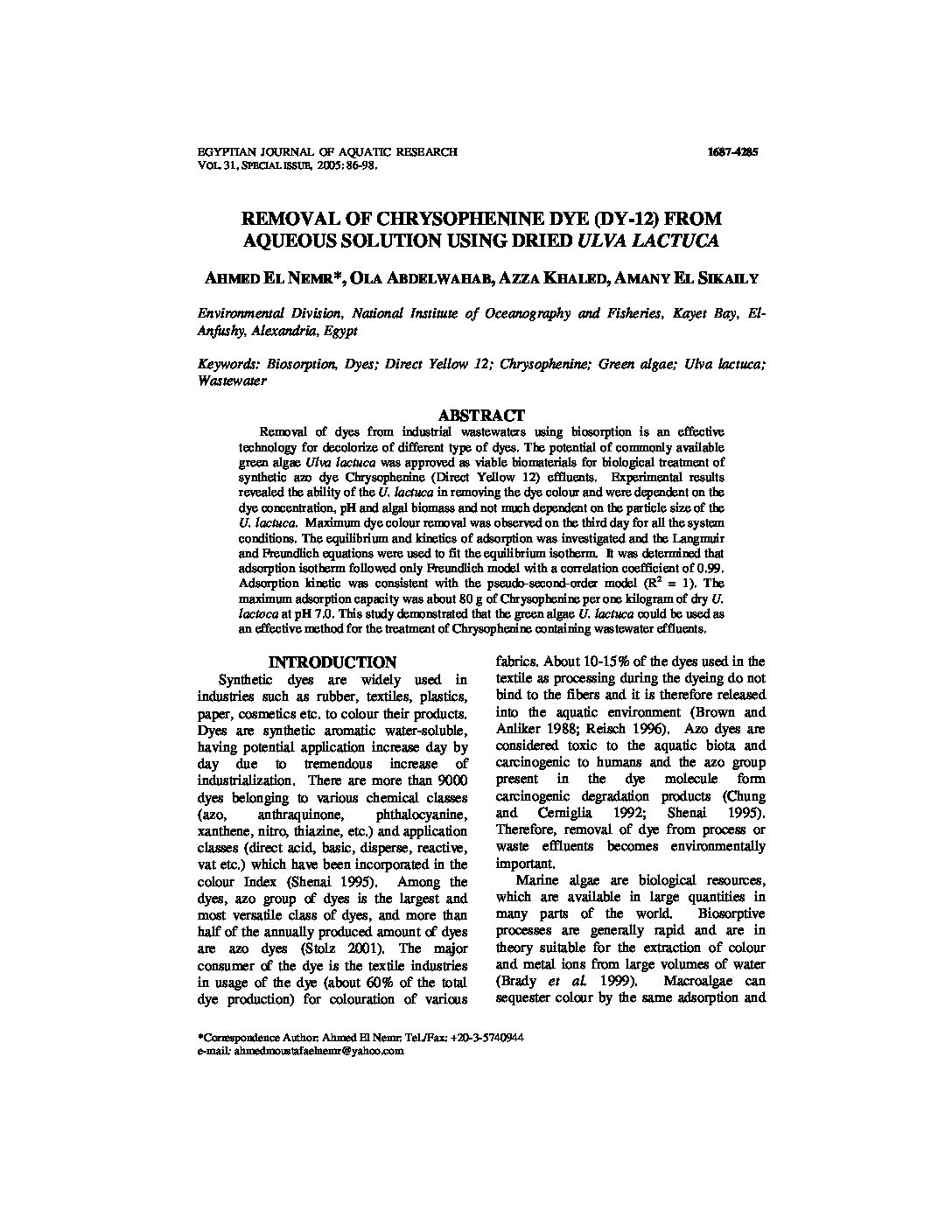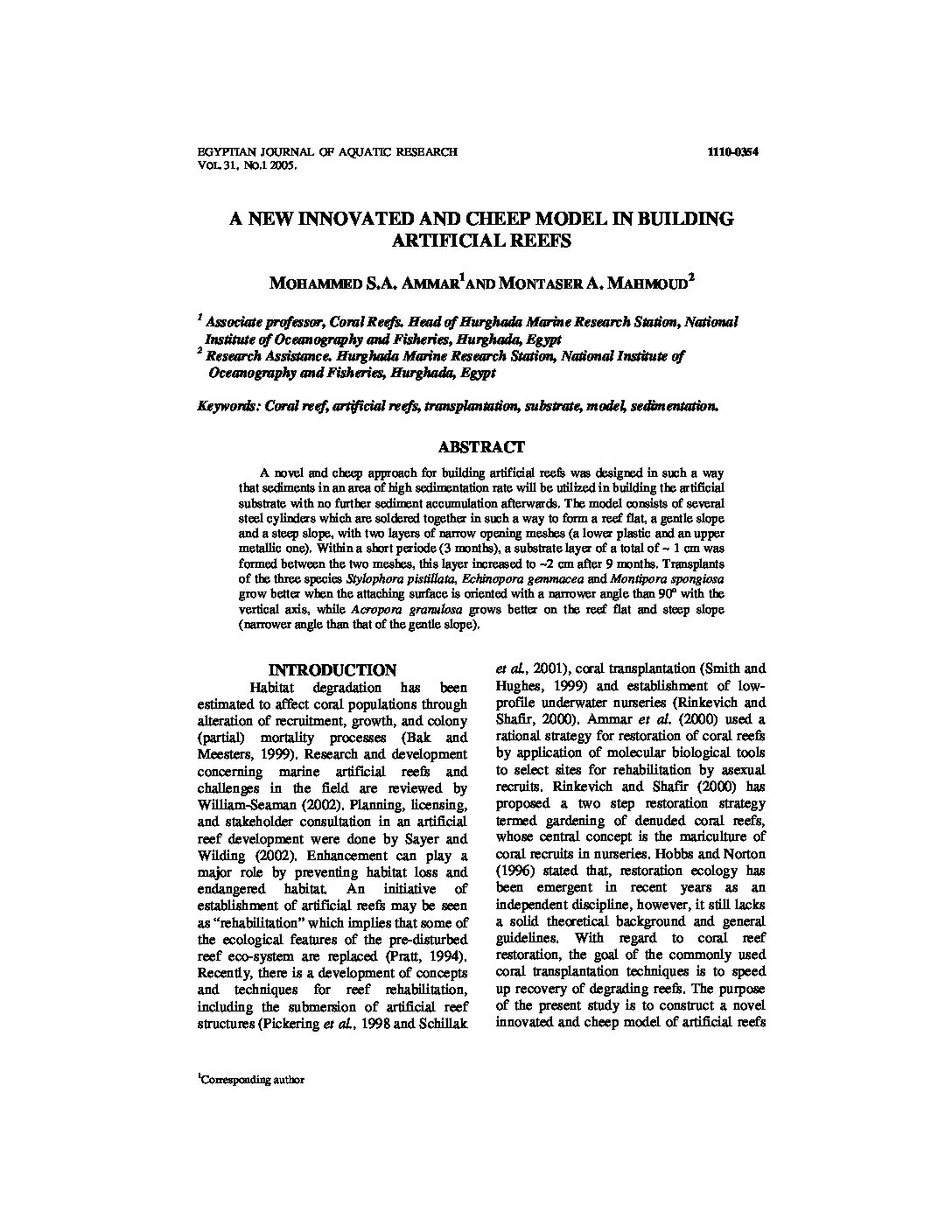Categories
vol-31REMOVAL OF CHRYSOPHENINE DYE (DY-12) FROM
AQUEOUS SOLUTION USING DRIED ULVA LACTUCA
AHMED EL NEMR*, OLA ABDELWAHAB, AZZA KHALED, AMANY EL SIKAILY
Environmental Division, National Institute of Oceanography and Fisheries, Kayet Bay, ElAnfushy, Alexandria, Egypt
Keywords: Biosorption, Dyes; Direct Yellow 12; Chrysophenine; Green algae; Ulva lactuca;
Wastewater
ABSTRACT
Removal of dyes from industrial wastewaters using biosorption is an effective
technology for decolorize of different type of dyes. The potential of commonly available
green algae Ulva lactuca was approved as viable biomaterials for biological treatment of
synthetic azo dye Chrysophenine (Direct Yellow 12) effluents. Experimental results
revealed the ability of the U. lactuca in removing the dye colour and were dependent on the
dye concentration, pH and algal biomass and not much dependent on the particle size of the
U. lactuca. Maximum dye colour removal was observed on the third day for all the system
conditions. The equilibrium and kinetics of adsorption was investigated and the Langmuir
and Freundlich equations were used to fit the equilibrium isotherm. It was determined that
adsorption isotherm followed only Freundlich model with a correlation coefficient of 0.99.
Adsorption kinetic was consistent with the pseudo-second-order model (R
2
= 1). The
maximum adsorption capacity was about 80 g of Chrysophenine per one kilogram of dry U.
lactoca at pH 7.0. This study demonstrated that the green algae U. lactuca could be used as
an effective method for the treatment of Chrysophenine containing wastewater effluents.







